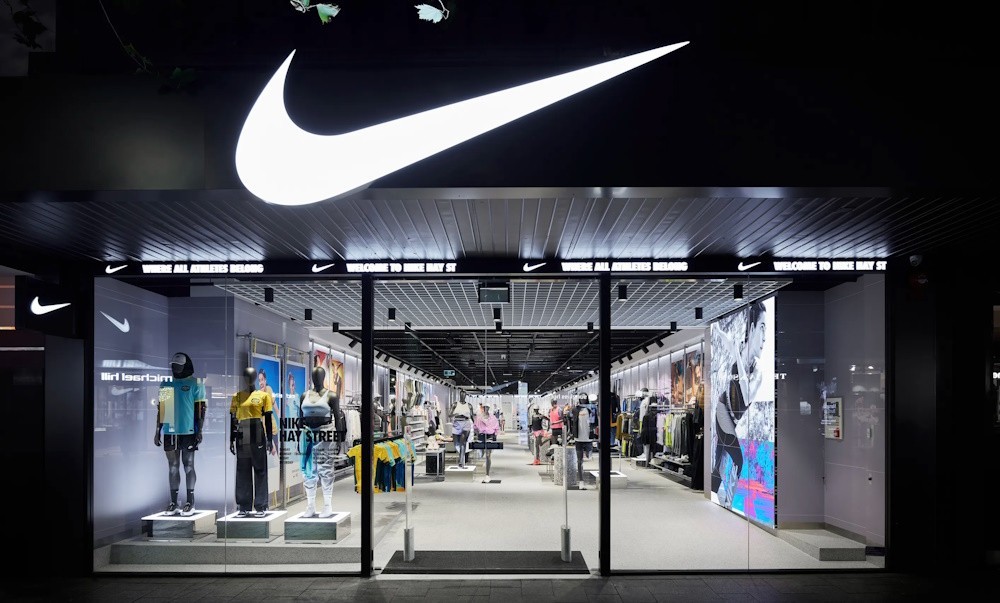Vietnam became Nike’s Achilles’ heel after Trump’s tariff

Consumers may soon face higher prices for their next pair of sneakers. Nike, a leading US sportswear brand, is confronting a significant challenge as approximately 50% of its footwear production is based in Vietnam, presenting potential financial implications for the company. Nike’s footwear initially presents an appealing image with its thick soles, sleek cushioning, and a price tag exceeding $100. However, embedded within the tongue is a phrase that now poses a challenge to the company’s stability: Made in Vietnam. The recent imposition of a 46 percent tariff on goods from the Southeast Asian nation by US President Donald Trump has turned that label into a significant liability.
The recently announced tariffs are a key component of Trump’s renewed initiative to ‘bring manufacturing back home.’ This populist commitment carries significant implications for companies that have invested decades in developing global supply chains. Nike has identified Vietnam as a pivotal hub in its footwear manufacturing operations, rather than merely another location for production. Approximately half of all Nike footwear is produced in Vietnam, a development stemming from a three-decade investment that has positioned the country as the global hub for sneaker manufacturing.
Nike faces challenges in its shoe production operations in Vietnam. Nike initiated its manufacturing operations in Vietnam in 1995, positioning itself as one of the pioneering foreign investors in the nation’s post-reform economic landscape. Driven by competitive labor costs and an expanding industrial landscape, the company rapidly broadened its network to encompass 130 supplier factories, diversifying its production to include not only footwear but also apparel and equipment. The financial dynamics are striking — a standard Nike sneaker such as the Air Force 1, priced at $115, incurs a production cost of merely $18 when manufactured abroad.
The American Apparel & Footwear Association reports that the 46 percent tariff is applied in addition to the existing 20 percent duties on athletic shoes featuring textile uppers. Nike is facing an increased cost of $8.28 per pair, which amounts to an additional $66,000 for each standard shipping container, capable of holding approximately 8,000 pairs. The ramifications extend well beyond a single footwear design. Nike is implementing a strategy under the leadership of new CEO Elliott Hill, who was appointed last year, aimed at reclaiming its position among runners as its market share has declined in favor of emerging competitors such as On and Hoka. The Vomero 18 was anticipated to play a significant role in that resurgence, as reported by The Financial Times.
The implications of Trump’s tariffs are poised to significantly impact Nike more than other companies in the industry. Nike faces a distinctive level of exposure when compared to its competitors. The United States stands as the largest market for the company, which also produces a higher percentage of its footwear in Vietnam compared to many of its international competitors. Investors are paying close attention as the company’s stock has plummeted to an eight-year low this week, driven by concerns over a potential impact on margins.
Experts caution that transferring costs to consumers may pose significant risks. David Marcotte, senior vice-president at consultancy Kantar, remarked, “Identifying a more affordable market while remaining environmentally conscious is likely to present significant challenges.” The United States currently faces a significant challenge in finding sufficient skilled workers and specialized factories to effectively substitute Vietnam’s position in the supply chain, particularly in the short term.
Industry analysts indicate that should Nike decide to shift its operations, it would require a timeframe of at least 18 to 24 months to observe significant outcomes. “According to Marcotte, these supply chains operate on a five-year cycle.” “Relocating requires careful planning and consideration.” Nike, Adidas, and Puma – an analysis of three prominent brands in the athletic wear industry. Nike’s significant presence in the US market, where it generates the bulk of its footwear sales, positions the company as particularly susceptible to potential tariff increases. The company’s reliance on Vietnam for 50 percent of its sourcing positions it for inevitable cost inflation, with few immediate options for mitigation.
Adidas, while significantly dependent on Vietnam for production — with 39 percent of its footwear manufactured in the country — boasts a more diversified global presence. The company reported a significant 19 percent revenue growth in its largest market, which encompasses Europe, the Middle East, and Africa (EMEA), for the fourth quarter of fiscal year 2024. Adidas is now positioned to strategically reroute inventory, allowing the company to mitigate the impact of tariff fluctuations with greater efficiency.
Puma is encountering more significant challenges ahead. Despite its significant production efforts in Vietnam, the company’s strategy to rebrand itself as a premium offering has not gained traction in the market. Analysts predict that margin pressure will be most pronounced, given that the Asia-Pacific region is projected to contribute only 20.8 percent to the company’s revenue in 2024, while the US market remains challenging due to elevated pricing strategies.
Nike may consider India as a potential location for relocating its footwear manufacturing operations. As Vietnam faces increasing tariff pressures and China continues to be sidelined due to previous trade disputes, brands are actively seeking alternative sourcing options. India has positioned itself as a formidable player in the global arena. Nike’s potential decision to relocate a segment of its production to India may serve to mitigate the impact of current challenges. The nation’s 26 percent flat tariff on footwear exports is significantly lower than Vietnam’s newly implemented effective rate, while labor costs continue to be competitive. Non-leather footwear, which holds a significant share in the athletic market, is subject to an average duty of 36 percent from India, while certain categories from Vietnam face duties as high as 60 percent.
With brands increasingly embracing a ‘China+1’ strategy, India is seeing a rise in its attractiveness as a business destination. However, challenges related to infrastructure and scalability persist, and a complete transition would require several years to achieve. Trump’s tariffs are exerting significant pressure on global supply chains. Vietnam has strategically positioned itself as a key player in the global sneaker production landscape. During the first term of the Trump administration, the nation experienced a significant influx of investment, largely attributed to the trade tensions with China that prompted manufacturers to explore alternative options. Vietnam experienced a significant increase in exports, highlighted by a $123.5 billion trade surplus with the United States in the previous year, marking it as the third largest globally.
The figure in question may have inadvertently contributed to the initiation of the tariffs that now pose a significant threat. The Trump administration utilized trade balances as a basis for establishing the ‘reciprocal’ rates enforced under the newly implemented regulations. Sneaker companies are currently in a state of urgency as they navigate the challenges ahead. Industry analysts predict that Adidas and Puma are likely to implement a price increase of approximately 20 percent in the US market to sustain their profit margins. However, it is anticipated that the companies may stagger these price hikes to mitigate the risk of alienating their consumer base. Nike, given its substantial presence in the United States, could face challenges in replicating similar strategies.










